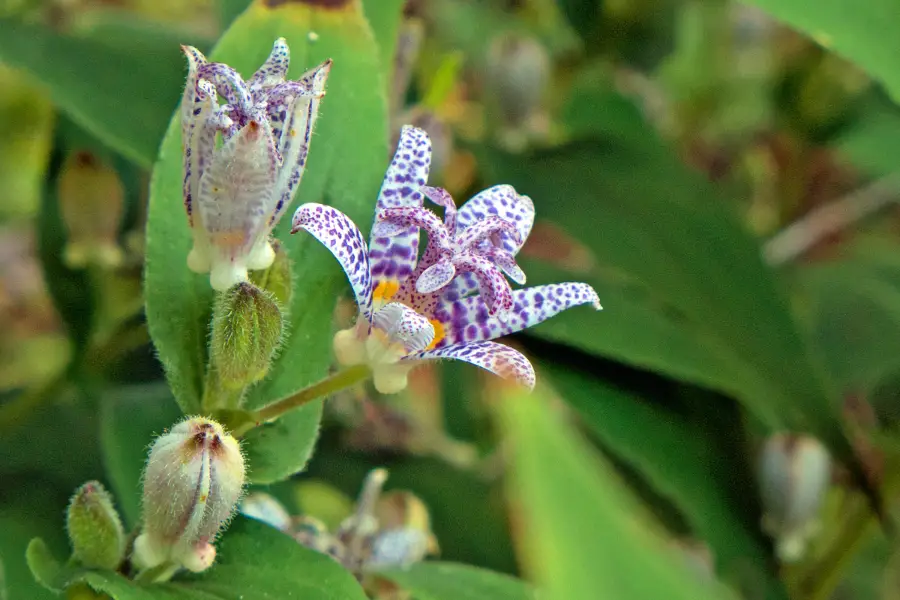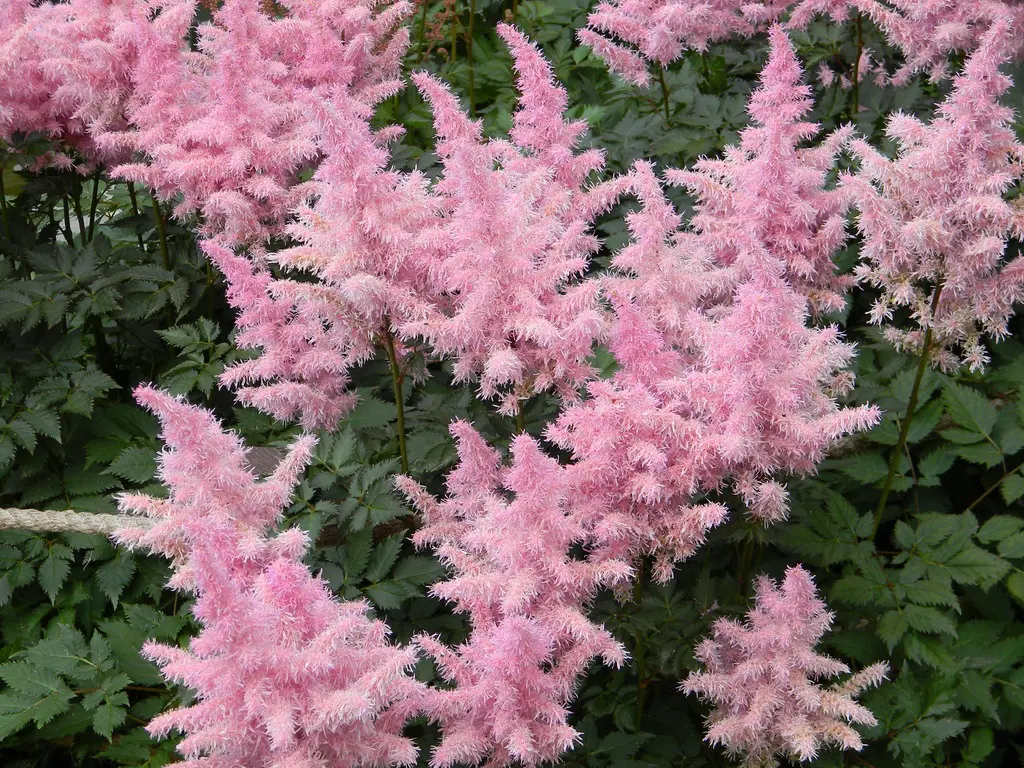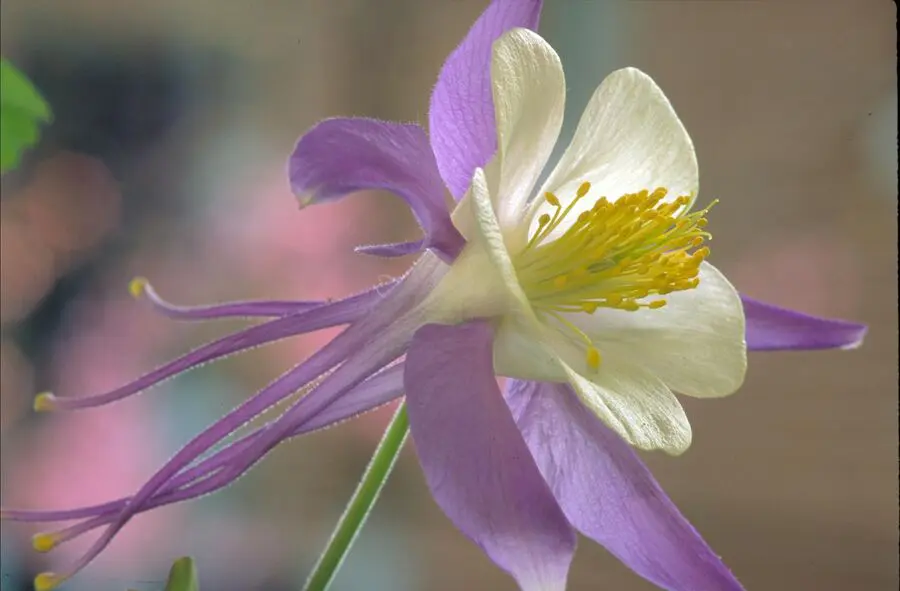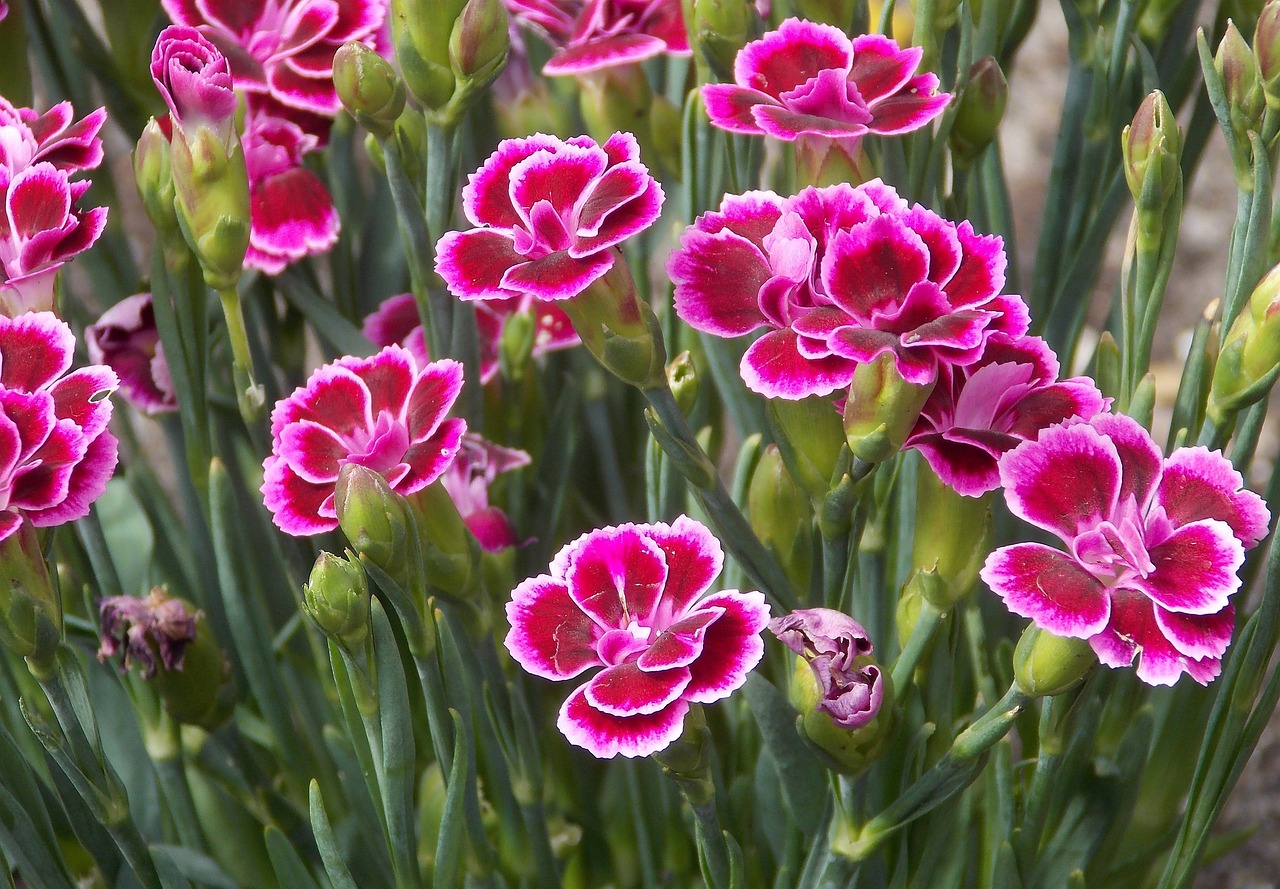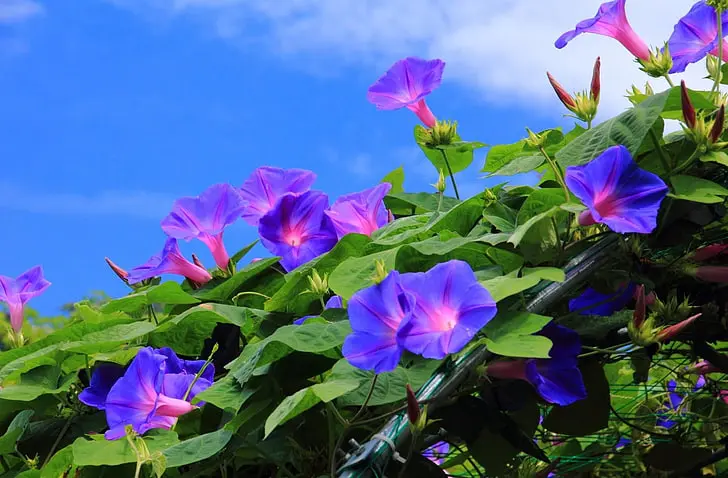This post contains affiliate links. If you buy something from one of our links we may earn a commission. Thanks
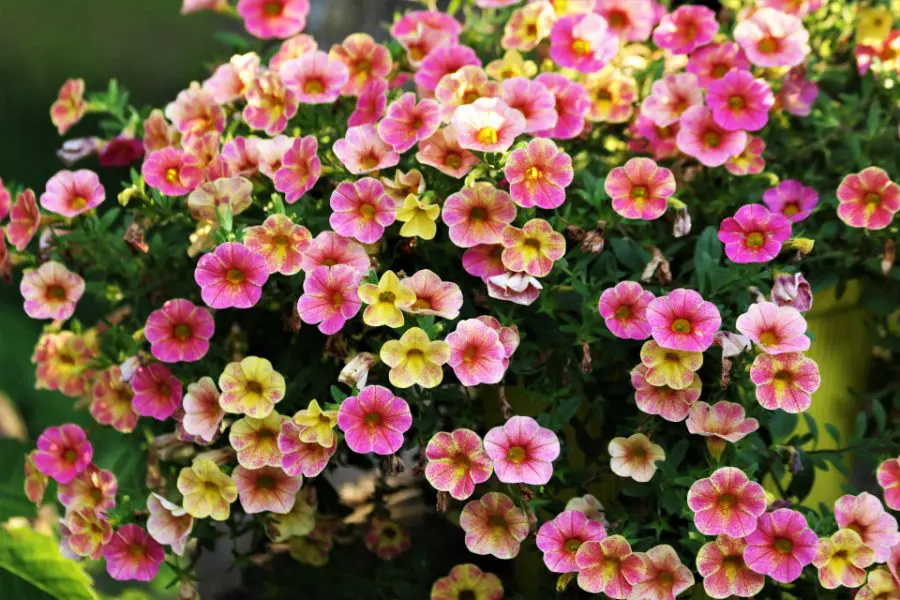
Discover the joy of nurturing Calibrachoa with our comprehensive guide on how to care for Calibrachoa hanging baskets.
Calibrachoa hanging baskets add vibrant color to patios and balconies. These plants thrive in well-draining soil and prefer a sunny location. Water regularly but allow the soil to dry slightly between waterings. Fertilize every two weeks with a balanced liquid fertilizer for best bloom production. Deadhead faded blooms to encourage more flowering.
Uncover tips, tricks, and expert advice for vibrant blooms!
If you’ve ever wondered how to care for Calibrachoa hanging baskets, you’re in the right place!
These vibrant, bell-shaped blooms, also known as Million Bells or Superbells, can transform any space into a colorful oasis.
But, like any living thing, they need a bit of love and attention. With the right care, these delightful plants will reward you with a cascade of color from spring to fall.
Let’s dive into the world of Calibrachoa and explore how to keep your hanging baskets blooming beautifully!
How To Care For Calibrachoa Hanging Baskets
Welcome to your ultimate guide on how to care for Calibrachoa hanging baskets!
These charming plants, also known as Million Bells or Superbells, are a sight to behold with their cascade of colorful blooms.
In this comprehensive guide, we’ll explore everything from the origins and varieties of Calibrachoa to planting, caring, and troubleshooting common issues.
We’ll also delve into propagation techniques and winter care, and answer some frequently asked questions.
Whether you’re a seasoned gardener or just starting out, this guide will equip you with the knowledge to keep your Calibrachoa baskets thriving. Let’s embark on this gardening journey together!
Can Calibrachoa Grow in Pots?
Absolutely! Calibrachoa, with their compact growth and cascading blooms, are perfectly suited for pot cultivation.
Whether it’s a small pot on your windowsill or a large container on your patio, these plants can thrive and add a splash of color.
Just remember, they prefer well-drained moist soil and a sunny spot to show off their vibrant flowers.
Brief Overview of Calibrachoa (also known as Million Bells or Superbells)
Let’s get to know Calibrachoa a bit better. These delightful plants, often referred to as Million Bells or Superbells, are native to South America and are cherished for their abundant, bell-shaped flowers.
They come in a rainbow of colors, from bright yellows and pinks to deep blues and purples.
They are great for container gardens. Their trailing habit makes them an excellent choice for hanging baskets, but they’re equally stunning in garden beds or as a border plant.
Despite their delicate appearance, they’re surprisingly hardy and are prolific bloomers from spring until the first frost.
Importance of Proper Care for Calibrachoa Hanging Baskets
Now, you might be wondering why it’s so important to know how to care for Calibrachoa hanging baskets properly.
Well, like any plant, Calibrachoa will only reach its full potential with the right care.
Proper watering, sunlight, soil, and fertilization are key to their health and blooming.
When cared for correctly, these plants can reward you with a profusion of blooms throughout the growing season, transforming your space into a vibrant, living piece of art.
Plus, understanding their needs can help you troubleshoot any issues that might arise, ensuring your Calibrachoa continues to thrive.
Understanding Calibrachoa
Ready to dive deeper into the world of Calibrachoa?
In this section, we’ll explore the fascinating origins and characteristics of these vibrant plants, discover the different varieties, and answer some common questions like Do Calibrachoa come back every year? and How long does Calibrachoa last?
Understanding these aspects will not only enrich your gardening knowledge but also help you provide the best care for your Calibrachoa.
So, let’s embark on this botanical journey and get to know Calibrachoa a little better!
Origin and Characteristics of Calibrachoa
Hailing from South America, Calibrachoa is a delightful plant that’s won the hearts of gardeners worldwide.
They belong to the Solanaceae family, which interestingly, also includes food crops like tomatoes and potatoes.
Calibrachoa is known for its profusion of bell-shaped flowers that resemble tiny petunia plants, hence their other popular name, Million Bells.
These plants have a trailing habit, making them perfect for adding a waterfall of color to hanging baskets or containers.
They’re also quite hardy and can bloom continuously from spring until the first frost.
Different Varieties of Calibrachoa
There’s a Calibrachoa for every color palette! These plants come in a wide range of colors, including coral, yellow, orange, red, pink, blue, purple, burgundy, lavender, and cream.
Some popular varieties include ‘Cabaret Hot Pink’, ‘Cabaret Purple Glow’, ‘Million Bells Terra Cotta’, ‘MiniFamous Double Blue’, and ‘Superbells Pomegranate Punch’.
Each variety has its unique charm, but all share the same vibrant, prolific blooming habit that Calibrachoa is loved for.
You probably can find them at your local garden center and if not you can buy Calibrachoa plants and seeds online.
Does Calibrachoa Come Back Every Year?
Calibrachoa is a tender perennial, which means they can come back year after year in warmer climates (USDA Zones 9-11).
However, in colder regions, they are often grown as annuals. If you live in a cooler area and want to see your Calibrachoa return, consider overwintering them indoors.
With a bit of care, you can enjoy their vibrant colors year after year!
How Long Does Calibrachoa Last?
With proper care, Calibrachoa can bloom from spring until the first frost, providing you with a long season of vibrant colors.
Even though they are short-lived perennials, their prolific blooming habit makes them a worthwhile addition to any garden.
Remember, regular watering, plenty of sunlight, and feeding can help extend their blooming period and keep your Calibrachoa looking their best.
Planting Calibrachoa
Now that we’ve got to know Calibrachoa a bit better, it’s time to roll up our sleeves and get planting!
In this section, we’ll discuss the ideal conditions for planting Calibrachoa, the best soil and pots to use, and how many plants you should place in a hanging basket.
We’ll also provide a step-by-step guide to planting Calibrachoa in hanging baskets.
Whether you’re a seasoned gardener or a beginner, these tips will help you create a stunning display of Million Bells. So, let’s get started!
Calibrachoa Soil
When it comes to soil, Calibrachoa isn’t too picky, but there are a few things to keep in mind.
These plants prefer well-drained soil, as they don’t like to sit in waterlogged conditions.
A good quality potting mix, preferably one that’s peat-based, is usually a great choice.
If you’re planting in garden beds, consider amending the soil with organic material to improve its richness and drainage.
Remember, a happy Calibrachoa is one that has its roots in the right soil!
The Benefits of Using Coco Coir and Perlite Instead of Peat
While peat has been a traditional choice for many gardeners, there’s been a shift towards more sustainable and equally effective alternatives like coco coir and perlite. Here’s why:
Coco Coir: This is a by-product of the coconut industry and is a peat-like substance that’s excellent at retaining water.
It’s also pH neutral, which is beneficial for plants like Calibrachoa that prefer slightly acidic to neutral soil.
Plus, coco coir is a renewable resource, making it a more environmentally friendly choice compared to peat, which takes centuries to form and is harvested faster than it can regenerate.
Perlite: This is a form of volcanic glass that’s heated until it expands into a lightweight, porous material.
It’s fantastic for improving soil drainage, which is crucial for Calibrachoa.
It also helps aerate the soil, allowing plant roots to take in oxygen more efficiently.
Like coco coir, perlite is a sustainable choice and doesn’t deplete natural peatlands.
By using a mix of coco coir and perlite, you can create a soil environment that retains moisture, drains well, and provides ample oxygen to your Calibrachoa roots, all while being kinder to the planet.
Calibrachoa Pots
Calibrachoa is versatile and can thrive in various pots, from hanging baskets to window boxes and even large containers.
The key is to ensure the pot has sufficient drainage holes to prevent waterlogging.
Also, consider the size of the pot. A larger pot will allow more room for growth and hold more soil, which can retain moisture longer.
How Many Calibrachoa in a Hanging Basket
Wondering how many Calibrachoa plants to put in a hanging basket?
A good rule of thumb is to allow three plants per 10-inch hanging basket or container.
This will give each plant enough space to grow and spread without overcrowding, leading to a fuller and more attractive display.
Remember, Calibrachoa has a trailing habit, so they’ll fill out the basket beautifully as they grow.
Ideal Conditions for Planting
Calibrachoa loves the sun, so choose a location that gets at least six hours of sunlight each day.
While they can tolerate partial shade, too little sun can result in fewer blooms.
As for temperature, they prefer a mild to warm climate and can even tolerate a light frost.
However, they’ll start to thrive when the danger of severe frost has passed, usually in early spring.
When planting, ensure the soil is moist and well-draining. If you’re planting in a pot or basket, make sure it’s filled with good quality, well-draining potting mix.
A step-by-step guide to planting Calibrachoa in hanging baskets
Ready to bring some Calibrachoa charm to your space? In this section, we’ll walk you through a step-by-step guide to planting Calibrachoa in hanging baskets.
Don’t worry if you’re new to this; we’ll make it as simple and enjoyable as possible.
By the end of this guide, you’ll be well on your way to creating a stunning display of cascading blooms that will be the envy of your neighborhood.
So, let’s get our gardening gloves on and start planting!
Step-by-Step Guide to Planting Calibrachoa
Choose Your Basket: Start by selecting a hanging basket that has good drainage. Remember, Calibrachoa doesn’t like to sit in waterlogged soil.
Prepare Your Soil: Fill the basket with a mix of coco coir and perlite. This combination will ensure good moisture retention and excellent drainage.
Plant Your Calibrachoa: Make a hole in the soil large enough to accommodate the root ball of your Calibrachoa plant.
Carefully remove the plant from its nursery pot, place it in the hole, and gently cover the roots with soil.
If you’re planting multiple Calibrachoas in one basket, remember to allow three plants per 10-inch basket.
Water Thoroughly: After planting, give your Calibrachoa a good drink of water. Ensure the water drains out of the bottom of the basket to avoid waterlogging.
Find the Perfect Spot: Hang your basket in a location that receives at least six hours of sunlight each day.
Care for Your Plant: Keep the soil consistently moist but not waterlogged, and feed your Calibrachoa with a water-soluble fertilizer or a slow-release fertilizer to encourage blooming.
Calibrachoa Companion Plants
Calibrachoa are sociable plants that play well with others! When choosing companion plants, consider those that have similar light and water requirements. Here are a few suggestions:
Petunias: With their similar growth habits and care requirements, petunias make excellent companions for Calibrachoa.
Verbena: Verbena’s clusters of flowers complement the bell-shaped blooms of Calibrachoa beautifully.
Lobelia: The delicate, trailing habit of lobelia can add a different texture to your hanging basket.
Bacopa: Bacopa’s small, star-shaped flowers can provide a lovely contrast to Calibrachoa’s larger blooms.
Remember, the best companion plants are those that you love and will enjoy caring for alongside your Calibrachoa!
Calibrachoa Care
Now that we’ve got our Calibrachoa comfortably settled in their new hanging baskets, it’s time to talk about care.
In this section, we’ll delve into the specifics of Calibrachoa care, from watering and sunlight requirements to soil preparation and fertilization.
We’ll also discuss their heat tolerance and USDA hardiness zones. With the right care, your Calibrachoa will reward you with a stunning display of blooms throughout the growing season.
So, let’s get started and learn how to keep our Calibrachoa happy and healthy!
Calibrachoa Water Requirements
Calibrachoa enjoys a drink, but it’s all about balance. They need to be kept well-hydrated but not waterlogged.
The key is to let the top inch or so of the soil dry out between waterings.
This approach ensures that your Calibrachoa gets the moisture it needs without the risk of root rot.
Watering: Frequency and Amount
The frequency of watering your Calibrachoa will depend on several factors, including the weather and the size of your pot or basket.
In hot, dry conditions, you might need to water your plants daily, or even twice a day.
In cooler or cloudy weather, watering every few days might be sufficient.
A good rule of thumb is to check the soil regularly. If it feels dry to the touch an inch below the surface, it’s time to water.
When you do water, do so deeply until water drains out of the bottom of the pot or basket.
Calibrachoa Light Requirements
Sunlight is a crucial ingredient for a blooming Calibrachoa.
These plants love the sun and bloom best with at least six hours of full sun exposure each day.
However, they can tolerate partial shade, especially in warmer areas.
Insufficient sun exposure can result in fewer blooms, so make sure your hanging baskets are in a sunny spot!
Soil: Ideal Soil Conditions and How to Prepare It
As we’ve mentioned before, Calibrachoa prefers well-drained soil. A mix of coco coir and perlite is a great choice as it retains moisture while ensuring good drainage.
If you’re planting in garden beds, consider amending the soil with organic material to improve its richness and drainage.
Fertilizing Calibrachoa
Calibrachoa are heavy feeders, so regular feeding is essential for their growth and blooming.
You can feed them with a slow-release fertilizer at planting time, and then supplement with a diluted liquid fertilizer every couple of weeks throughout the growing season.
Be careful not to over-fertilize, though, as this can do more harm than good.
Calibrachoa Heat Tolerance
Calibrachoa is pretty tough when it comes to heat. They’re drought and heat-tolerant plants, but for the best blooms, don’t let them dry out repeatedly.
If you live in a particularly hot area, providing some afternoon shade can help protect your plants from the intense heat.
Calibrachoa USDA Hardiness Zones
Calibrachoa is a tender perennial that’s winter hardy to USDA Zones 9-11. This means that in these zones, your Calibrachoa can come back year after year.
In colder zones, they’re often grown as annuals. But don’t worry, with proper care and a bit of protection from frost, you can enjoy your Calibrachoa even if you live outside these zones.
How to winterize Calibrachoa in pots
Winterizing Calibrachoa in pots involves a few steps to ensure they survive the colder months, especially if you live in a region where temperatures drop below freezing.
Here’s a step-by-step guide:
Move Your Pots: If possible, move your Calibrachoa pots to a sheltered location, such as a patio, porch, or against a wall. This can help protect them from harsh winter winds and frost.
Water Less Frequently: During winter, Calibrachoa’s growth slows down, and they require less water.
Overwatering can lead to root rot, especially in colder temperatures. So, reduce your watering frequency and only water when the top inch of soil feels dry to the touch.
Protect from Frost: If a frost is forecasted, cover your Calibrachoa with a frost cloth or move them indoors if possible. Remember, while Calibrachoa can tolerate a light frost, they’re not fans of freezing temperatures.
Consider Overwintering Indoors: If you live in a region with harsh winters, consider overwintering your Calibrachoa indoors.
Before the first frost, move your pots to a cool, bright location inside, such as a sunroom or near a south-facing window.
Keep them watered, but allow the soil to dry out between waterings.
Prune and Feed: In early spring, as temperatures start to rise, prune your Calibrachoa back to about half their size to encourage new growth.
Feed them with a slow-release fertilizer to give them a boost for the growing season ahead.
Remember, each plant and situation is unique, so adjust these steps as needed based on your specific conditions.
Pruning and Maintenance
As we continue our journey in Calibrachoa care, let’s turn our attention to pruning and maintenance.
These tasks might seem a bit daunting if you’re new to gardening, but don’t worry!
With a little bit of knowledge and some simple tools, you can keep your Calibrachoa looking its best.
In this section, we’ll discuss when and how to prune your plants, the importance of deadheading, and how these practices contribute to the overall health and beauty of your Calibrachoa.
So, let’s grab our pruning shears and get started!
When and How to Prune Calibrachoa
Pruning is an essential part of Calibrachoa care, helping to maintain their shape and encourage more blooms.
The best time to prune your Calibrachoa is in late summer or early fall when their growth begins to slow down.
Here’s how to do it:
Identify the Stems to Prune: Look for stems that are overgrown or have fewer flowers. These are the ones you’ll want to prune.
Make the Cut: Using a pair of clean, sharp pruning shears, cut the stem back to about half its length.
Make your cut just above a leaf node (where a leaf joins the stem). This encourages the plant to branch out and produce more flowers.
Repeat: Continue this process, pruning about one-third of the plant at a time. This helps to maintain the overall shape of the plant and encourages new growth.
Remember, pruning isn’t just about cutting back your plant. It’s also an opportunity to check for any signs of disease or pests.
If you notice anything unusual, like discolored leaves or spots, be sure to treat it promptly to keep your Calibrachoa healthy.
Importance of Deadheading and How to Do It
Deadheading, or the process of removing spent flowers, is another important aspect of Calibrachoa care.
While Calibrachoa is considered a self-cleaning plant (meaning it naturally drops its spent flowers), a little bit of manual deadheading can encourage the plant to produce more blooms.
Here’s how to deadhead your Calibrachoa:
Identify Spent Blooms: Look for flowers that are wilting, turning brown, or otherwise past their prime. These are the ones you’ll want to remove.
Pinch or Cut: Using your fingers or a pair of clean, sharp pruning shears, gently pinch or cut off the spent flower. Be careful not to damage the stem or any nearby buds.
Repeat: Continue this process throughout the blooming season. Regular deadheading can keep your Calibrachoa looking fresh and full of color.
Remember, while deadheading can be beneficial, it’s not strictly necessary for Calibrachoa. If you prefer a more hands-off approach, your plants will still bloom beautifully without it.
Troubleshooting Common Problems
Even with the best care, Calibrachoa can sometimes run into a few issues.
But don’t worry, most of these problems are easily solvable once you know what to look for.
In this section, we’ll discuss how to identify and treat common pests and diseases that might affect your Calibrachoa.
We’ll also address common issues like poor blooming, wilting, and leaf discoloration.
With these troubleshooting tips in your gardening toolkit, you’ll be well-equipped to keep your Calibrachoa healthy and vibrant.
So, let’s dive in and learn how to tackle these common problems!
Identifying and Treating Common Pests and Diseases
Calibrachoa can sometimes be affected by pests and diseases. Here are a few common ones and how to deal with them:
Aphids: These tiny insects can be green, yellow, black, or red. They suck the sap from your plants, which can lead to yellowing leaves and stunted growth.
If you notice aphids, you can spray your plants with a mixture of water and mild dish soap, or use a commercial insecticidal soap.
Spider Mites: These tiny mites can cause yellow or brown spots on your Calibrachoa’s leaves. They’re often found on the undersides of leaves and can be difficult to see with the naked eye.
If you suspect spider mites, try spraying your plants with a strong jet of water to dislodge them, or use neem oil or a miticide.
Root Rot: If your Calibrachoa’s leaves are wilting or turning yellow, and the plant seems generally unhealthy despite proper care, it might be suffering from root rot.
This is often caused by overwatering. If you suspect root rot, you may need to repot your plant in fresh, well-draining soil, and be careful to avoid overwatering in the future.
Addressing Common Issues Like Poor Blooming, Wilting, and Leaf Discoloration
Poor Blooming: If your Calibrachoa isn’t blooming as much as you’d like, it might not be getting enough sunlight.
Remember, these plants love full sun and need at least six hours of sunlight each day to bloom their best.
Lack of nutrients can also lead to poor blooming. Make sure you’re feeding your Calibrachoa regularly with a balanced, slow-release fertilizer.
Wilting: Wilting can be a sign of either overwatering or underwatering. Check the soil to determine which might be the case.
If the soil is dry, your plant needs more water. If it’s soggy, you might be watering too much and need to let the soil dry out a bit.
Leaf Discoloration: Yellowing leaves can be a sign of several issues, including overwatering, underwatering, or a nutrient deficiency.
Check your watering practices first, and if those seem fine, consider whether your plant might need more fertilizer.
If the leaves are turning brown, your plant might be getting too much sun and could benefit from a bit of afternoon shade.
Remember, the key to solving most plant problems is to catch them early.
Regularly check your Calibrachoa for signs of pests or disease, and address any issues as soon as you notice them.
Winter Care for Calibrachoa
As the seasons change and the chill of winter approaches, you might be wondering how to keep your Calibrachoa thriving.
While these plants love the warmth of the sun, they can also handle cooler temperatures with a bit of preparation and care.
In this section, we’ll discuss how to prepare and care for your Calibrachoa during the winter months.
From moving your plants to a sheltered location to adjusting your watering schedule, we’ll cover all the essential tips to ensure your Calibrachoa stays healthy and ready to bloom again come spring.
So, let’s bundle up and get started on winter care for Calibrachoa!
How to Prepare and Care for Calibrachoa in Winter
Winter care for Calibrachoa involves a few key steps to ensure they survive the colder months, especially if you live in a region where temperatures drop below freezing.
Here’s how to prepare and care for your Calibrachoa in winter:
Move Your Pots: If possible, move your Calibrachoa pots to a sheltered location, such as a patio, porch, or against wall. This can help protect them from harsh winter winds and frost.
Water Less Frequently: During winter, Calibrachoa’s growth slows down, and they require less water.
Overwatering can lead to root rot, especially in colder temperatures. So, reduce your watering frequency and only water when the top inch of soil feels dry to the touch.
Protect from Frost: If a frost is forecasted, cover your Calibrachoa with a frost cloth or move them indoors if possible.
Remember, while Calibrachoa can tolerate a light frost, they’re not fans of freezing temperatures.
Consider Overwintering Indoors: If you live in a region with harsh winters, consider overwintering your Calibrachoa indoors.
Before the first frost, move your pots to a cool, bright location inside, such as a sunroom or near a south-facing window.
Keep them watered, but allow the soil to dry out between waterings.
Prune and Feed: In early spring, as temperatures start to rise, prune your Calibrachoa back to about half their size to encourage new growth.
Feed them with a slow-release fertilizer to give them a boost for the growing season ahead.
Remember, each plant and situation is unique, so adjust these steps as needed based on your specific conditions.
With the right care, your Calibrachoa can survive the winter and be ready to bloom beautifully again in the spring.
Propagating Calibrachoa
As you become more familiar with caring for Calibrachoa, you might find yourself wanting to grow more of these vibrant, blooming beauties.
That’s where propagation comes in! Propagation is a gardening technique that allows you to create new plants from the ones you already have.
In this section, we’ll explore why propagation through cuttings is preferred for Calibrachoa and provide a step-by-step guide to doing it yourself.
So, if you’re ready to expand your Calibrachoa collection and share the joy of these plants with others, let’s dive into the world of propagation!
Why Propagation Through Cuttings is Preferred
Propagation through cuttings is often preferred for Calibrachoa for a few reasons.
First, it’s a relatively quick and straightforward process. Within a few weeks, you can have new plants that are ready to bloom.
Second, cuttings ensure that the new plants will be genetically identical to the parent plant.
This means that all the characteristics you love about your Calibrachoa like its color, size, and growth habit will be present in the new plants.
It’s also worth noting that many Calibrachoa varieties are hybrids, which means they don’t produce seeds that are true to type.
So, if you want to replicate a specific variety, propagation through Calibrachoa cuttings is the way to go.
Step-by-Step Guide to Propagating Calibrachoa
Here’s a simple step-by-step guide to propagating Calibrachoa through cuttings:
Choose the Right Stem: Look for a healthy, vigorous stem that has several leaves but no flowers. The best time to take cuttings is in the morning when the plant is fully hydrated.
Make the Cut: Using a clean, sharp pair of pruning shears, cut the stem about 4-6 inches from the tip. Make sure to make the cut just below a leaf node (where a leaf joins the stem).
Prepare the Cutting: Remove the leaves from the lower half of the cutting. This helps to reduce moisture loss and encourages the cutting to focus its energy on root development.
Rooting Hormone (Optional): While not necessary, you can dip the cut end of the stem in rooting hormone to encourage faster root growth.
Plant the Cutting: Plant the cutting in a pot filled with a well-draining potting mix, such as a mix of half perlite and half coco coir or peat moss.
Make sure the leaf nodes (where you removed the leaves) are below the soil surface as this is where the new roots will emerge.
Care for the Cutting: Place the pot in a warm, bright location out of direct sunlight.
Keep the soil consistently moist but not waterlogged. In a few weeks, the cutting should develop roots and begin to show new growth.
Transplant: Once the cutting has developed a strong root system and is growing well, it can be transplanted to a larger pot or outside, depending on the season and your climate.
Remember, patience is key when propagating plants. Give your cuttings the care they need, and in time, you’ll be rewarded with new Calibrachoa plants to enjoy and share.
FAQs
As we wrap up our comprehensive guide on Calibrachoa care, it’s time to address some frequently asked questions.
From watering schedules to pruning practices, these are the queries that often pop up among Calibrachoa enthusiasts.
So, let’s dive into these FAQs and clear up any lingering doubts you might have about caring for these delightful plants!
Q: Is it necessary to deadhead Calibrachoa?
A: While Calibrachoa is considered a self-cleaning plant, meaning it naturally drops its spent flowers, a bit of manual deadheading can encourage the plant to produce more blooms.
However, it’s not strictly necessary. If you prefer a more hands-off approach, your Calibrachoa will still bloom beautifully without it.
Q: How often should you water Calibrachoa?
A: The frequency of watering can depend on several factors, including the size of your plant, the size of the pot, the type of soil, and the weather.
As a general rule, you should water your Calibrachoa when the top inch of soil feels dry to the touch. In hot, dry conditions, this might be every day, while in cooler, cloudy weather, it might be every few days.
Q: How do you keep Calibrachoa from getting leggy?
A: If your Calibrachoa is getting leggy, it might not be getting enough light. Make sure your plant is getting at least six hours of sunlight each day. Regular pruning can also help maintain a bushier, more compact shape.
Q: How fast do Million Bells grow?
A: Calibrachoa, also known as Million Bells, are fast growers. With proper care, they can fill a hanging basket or container in just a few weeks during the growing season.
Q: What’s the difference between Million Bells and petunias?
A: While they look similar and are both popular choices for hanging baskets and containers, Million Bells (Calibrachoa) and petunias are different species.
Million Bells have smaller, more abundant flowers that look like miniature petunias but are generally easier to care for, as they are more resistant to diseases that commonly affect petunias.
They’re also self-cleaning, meaning they drop their spent flowers naturally, while petunias often require deadheading to keep blooming.
Conclusion
As we come to the end of our comprehensive guide on caring for Calibrachoa hanging baskets, it’s time to recap the key points and reflect on what we’ve learned.
From understanding the origins and characteristics of Calibrachoa to mastering the art of propagation, we’ve covered a lot of ground.
But remember, the joy of gardening comes not just from the knowledge we gain, but from the experience of nurturing these vibrant plants.
So, let’s wrap up and get ready to put our newfound knowledge into practice, creating beautiful, blooming Calibrachoa baskets to brighten our homes and gardens!
In this guide, we’ve delved into the world of Calibrachoa, exploring its origins, characteristics, and the many vibrant varieties available.
We’ve learned about the ideal conditions for planting these beauties, from the right soil mix to the perfect amount of sunlight.
We’ve also discussed the importance of regular watering, fertilizing, and pruning to keep your Calibrachoa healthy and blooming.
We’ve tackled common problems and pests and learned how to troubleshoot issues like poor blooming, wilting, and leaf discoloration.
We’ve also discovered how to prepare our Calibrachoa for winter and propagate new plants from cuttings.
Remember, the key to successful gardening is patience, practice, and a willingness to learn.
So, don’t be daunted if you’re new to caring for Calibrachoa. With the knowledge you’ve gained from this guide, you’re well-equipped to start your Calibrachoa gardening journey.
So, why not give it a try? Get your hands in the soil, nurture your Calibrachoa, and watch as they reward you with a cascade of vibrant blooms. Happy gardening!
Read more: Backyard Gardening Ideas












